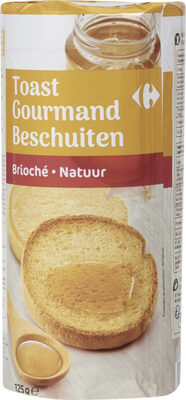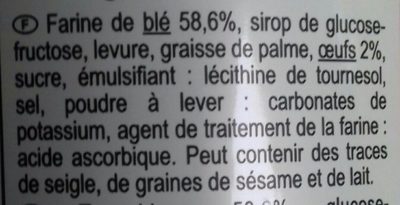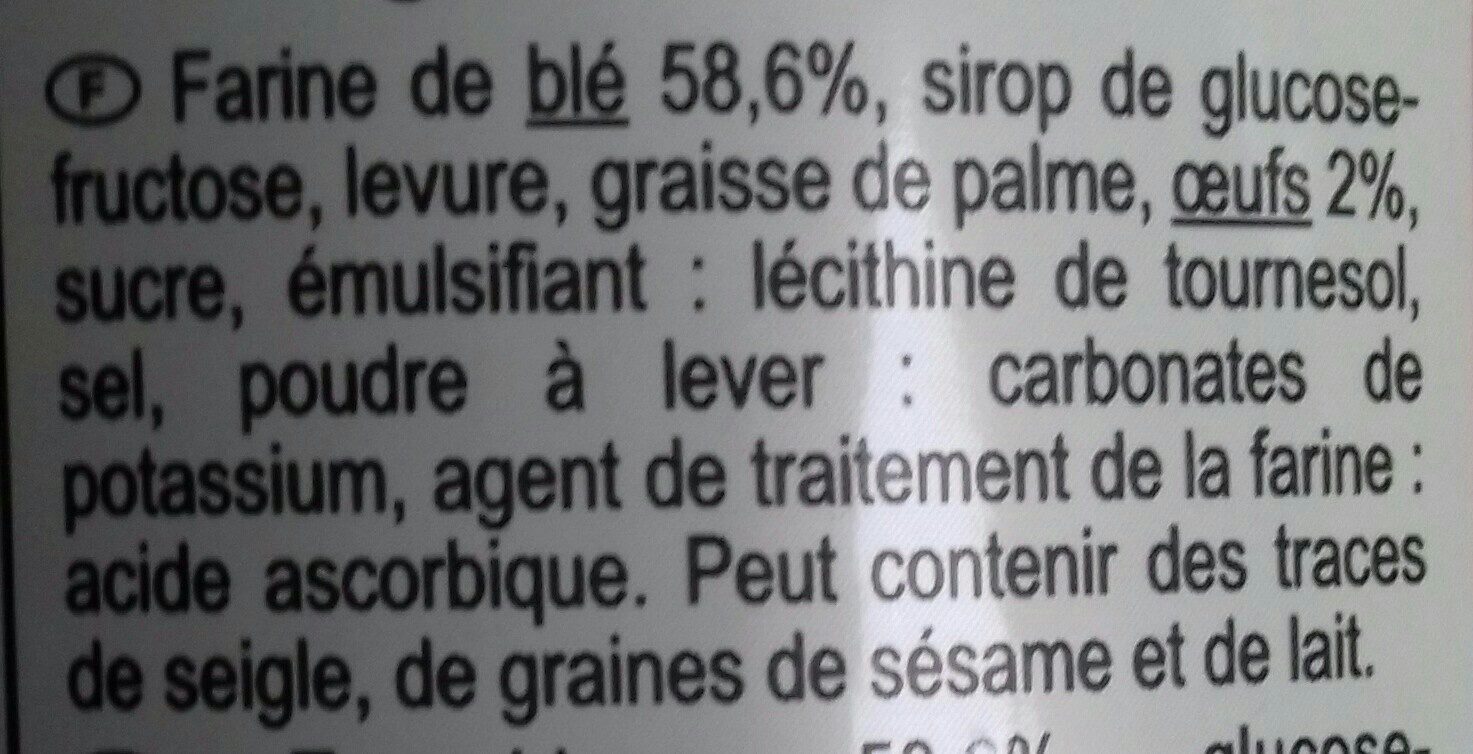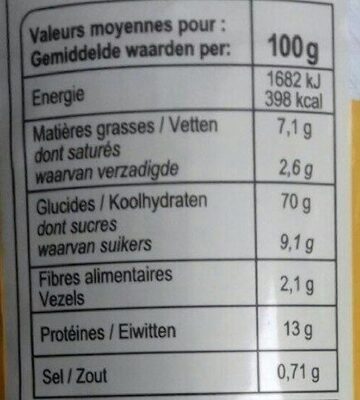Toast gourmand brioché - Carrefour - 125 g
This product page is not complete. You can help to complete it by editing it and adding more data from the photos we have, or by taking more photos using the app for Android or iPhone/iPad. Thank you!
×
Some of the data for this product has been provided directly by the manufacturer Carrefour.
Barcode: 3560070204908 (EAN / EAN-13)
Κοινό/Γενικό όνομα: Τοστ τσουρέκι
Ποσότητα: 125 g
Συσκευασία: Πλαστικό, en:Cardboard, fr:Carton à recycler, fr:Film à jeter, fr:Point vert, fr:Triman
Μάρκες: Carrefour
Κατηγορίες: en:Plant-based foods and beverages, en:Plant-based foods, en:Cereals and potatoes, en:Breads, en:Rusks, en:Toasts, fr:Toasts briochés
Ετικέτες, πιστοποιητικά, βραβεία:
en:Distributor labels, en:Carrefour Quality, en:Green Dot
Τόπος παραγωγής ή επεξεργασίας: Pays-Bas, Continental Bakeries, Pieter Zeemanweg 17, 3316 GZ, Dordrecht
Link στη σελίδα του προϊόντος στο επίσημο site του παραγωγού: http://carrefour.eu
Καταστήματα: Dia, Carrefour, carrefour.fr
Χώρες όπου πωλείται: Βέλγιο, Γαλλία, Ελλάδα, Ιταλία, Ισπανία
Matching with your preferences
Περιβάλλον
Carbon footprint
Συσκευασία
Transportation
Threatened species
Other information
Conservation conditions: À conserver à l'abri de la chaleur et de l'humidité. Pour une dégustation optimale, à consommer de préférence avant le : voir sur le côté du paquet.
Customer service: Interdis - TSA 91431 - 91343 MASSY Cedex - France
Report a problem
Data sources
Προϊόν προστέθηκε το από/για sebleouf
Last edit of product page on από/για wolfgang8741.
Product page also edited by aleene, date-limite-app, driveoff, gildubs, inf, kiliweb, openfoodfacts-contributors, org-carrefour, quechoisir, teolemon, yuka.UTRJWkc1OFB2TlFNcWZZaXpqNksxL2RSNGJtbllIdTFFdWtMSWc9PQ, yuka.WVBvbURhUWJoTlFTeC9FbXh3TEgydXhNN0tPclpVK25CUHRQSVE9PQ, yuka.sY2b0xO6T85zoF3NwEKvlnJ5bdP__m7KCxr5slG19_SfBLbOavFYw5riGKs, yukafix.
Last check of product page on από/για aleene.









